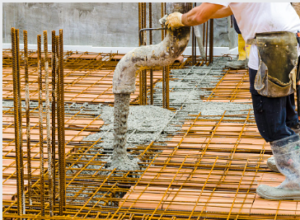Concrete is the most widely-used manufactured construction material on Earth. It’s used in buildings, bridges and roadways due to its strength and versatility.
 Hiring a professional, stress-free concreting Adelaide services contractor is your best bet for concrete work. These companies possess the necessary experience and tools for doing the job correctly the first time around.
Hiring a professional, stress-free concreting Adelaide services contractor is your best bet for concrete work. These companies possess the necessary experience and tools for doing the job correctly the first time around.
Compaction
Soil compaction is the practice of increasing soil density by compressing particles together. It typically requires mechanical action, such as using a hammer or roller. Compaction is essential in road construction, foundation construction and earth dams.
Additionally, it helps prevent settlement in structures, roadways and parking lots after construction. Settlement can lead to premature pavement failure and costly maintenance and repair expenses.
Different soil types respond differently to compaction efforts and may need special equipment. Factors like soil type, particle size distribution and critical water values all influence how well a soil compacts.
Sand and gravel typically undergo vibratory compaction using a vibratory or shear roller. Rammers or sheep foot rollers may reorient soil particles into denser configurations for softer soils like silts and clayey materials.
Soil compaction is usually carried out by a team of experienced and competent stress-free concreting Adelaide professionals trained to guarantee the required density is achieved and that the soil meets all project specifications. However, it is essential to note that for compaction to be adequate, the soil must have an ideal moisture content (OMC) at its dense point.
Several factors determine compaction, including water volume, compaction effort, and the number of passes applied. Furthermore, compaction equipment weight and contact area influence compaction results.
Compaction can be accomplished using various types of equipment, such as smooth rollers that use static pressure and vibration to compact soil. In addition, padfoot or tamping foot rollers use force to break up natural bonds between particles in the soil, which are perfect for medium to large compaction jobs.
Compaction services are essential in the building and infrastructure industries. They guarantee that a final product has sufficient strength and structural soundness, especially for roads, driveways, and foundations that must be compacted before construction begins to reduce the risk of buckling or settlement.
Levelling
If your driveway, sidewalk, patios or steps have become uneven due to sunkenness, levelling services from a professional are necessary. A stress-free concreting Adelaide contractor has the required tools and experience to get the job done the first time correctly; this helps avoid costly mistakes and allows you to complete your project much faster than if you attempted it yourself.
Fortunately, local concrete repair experts can solve various issues at less cost than replacement. For example, when levelling a slab, two standard methods include mud jacking and polyurethane injection.
Mudjacking is a method for lifting concrete slabs back to their original positions using Portland cement-based grout injection. Although less invasive and cost-effective than replacing concrete, this solution presents more challenges than anticipated.
Mudjacking companies usually begin by drilling multiple holes into the concrete and injecting a heavy-duty slurry with limestone particles to fill in cracks and voids, causing the slab to sink or shift.
SIt’s a process that can be applied to virtually any type of concrete, including garage floors, basements and foundations. So not only is it fast and affordable to fix sinking concrete, but it is also environmentally friendly.
Polyurethane injection is another option for concrete levelling, utilising lightweight foam to raise and level the ground. This less invasive option than mudjacking requires fewer holes to be drilled into the pavement – perfect for sidewalks and driveways! Plus, this technique is more cost-effective than mudjacking while less damaging to the soil.
Curing
Concrete is an integral element of construction, so you must take the time to cure it thoroughly after placing it. Otherwise, your surface won’t remain strong and durable over time.
Curing concrete involves maintaining an appropriate moisture level to develop its desired properties. Failure to cure can result in loss of strength, decreased abrasion resistance and shrinkage cracking.
The traditional curing method involves spreading a layer of water over the surface of the concrete to control evaporation and slow the dehydration process. Unfortunately, this approach may not be practical for all jobs involving concrete.